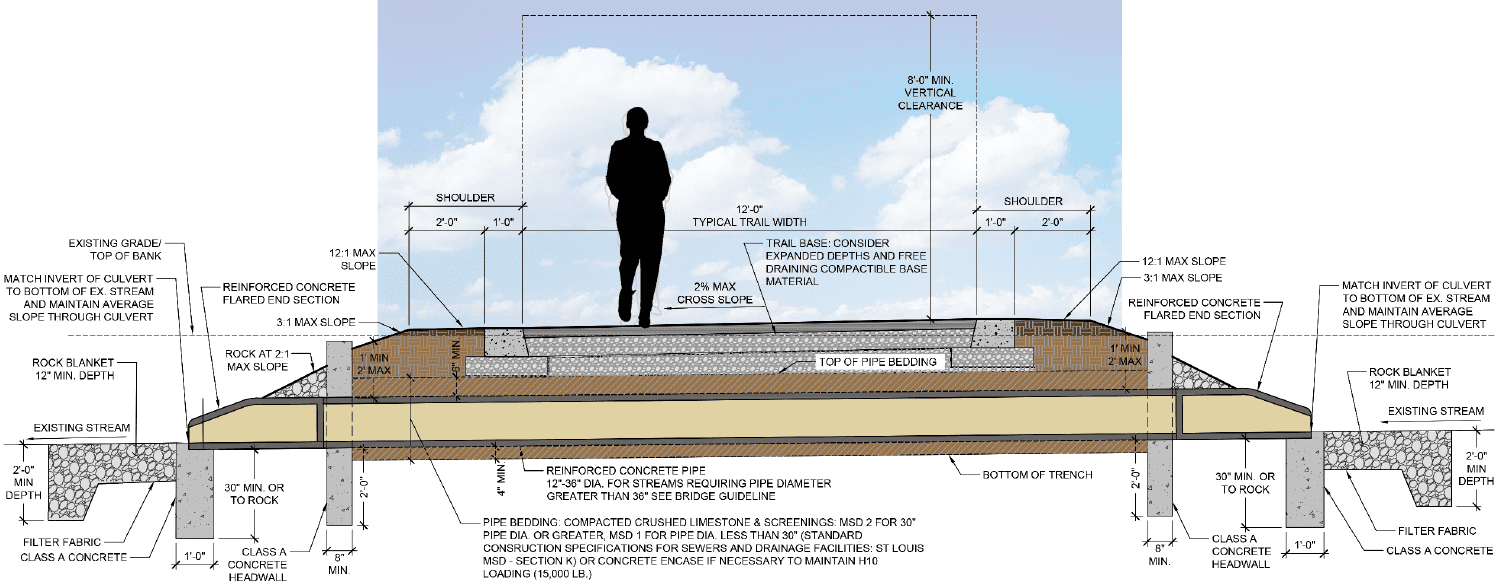Culverts are embedded pipe(s) that are used to maintain the flow of small, shallow streams, swales or ditches where they are crossed by the trail.
Typically, the surface of the trail does not change at a culvert as it would at a boardwalk or bridge. Boardwalks should be used for crossing wet areas such as wetlands. Bridges should be used when crossing large, deep streams with long spans, such as perennial streams.
Major design considerations for the standard cross section include:
- To provide adequate cover for the culvert pipe the trail can be raised slightly at the culvert. All slope constraints shall be met. The rise should be gradual and not a “speed bump”.
- Projecting pipe, end section, headwall or other end treatment.
- Erosion control and scour protection.
- Use when crossing minor water conveyance (swale, ditch, or stream).
- Use to allow water to flow underneath trail without overtopping the surface. Consider a bridge if the stream or ditch is too large for a feasible culvert crossing.
- Consider oversizing and/or additional piping and/or box culverts, particularly in wetland or flood prone areas, as these can facilitate environmental mitigation and support wildlife crossings.

The end of culverts can be treated with a variety of options depending on the situation. Headwalls (left image above) can be used as a retaining measure while adding visual interest in areas of high visibility. Flared end sections provide a less expensive option in areas of lower visibility.
Design Metrics:
- Slope From Edge of Shoulder to Top of Culvert – max 3H:1V
- Culvert Length – End Treatment Will Determine Total Length of Culvert. If using headwalls to shorten the crossing, railing will be required following same standards as boardwalk railings.
- Erosion Control Measures – Erosion control protection measures to be designed based on anticipated flows crossing through the culvert.
- Design Load – H5 (10,000 lb) for ambulance or fire rescue apparatus
- Culvert pipe shall not be less than 12-inch nominal diameter and St. Louis MSD approved pipe for stormwater:
- Vitrified clay pipe (VCP) – 12 inch and larger
- Concrete pipe – 12 inch and larger
- Reinforced concrete pipe (RCP) – 12 inch and larger
- Pipe encasement to achieve appropriate design load
- Headwalls consistent with MSD Standard “Flared End Section”
- Erosion Control
- Use of existing drainage facilities must be verified by hydrologic and hydraulic analysis
Standard Cross Section:

